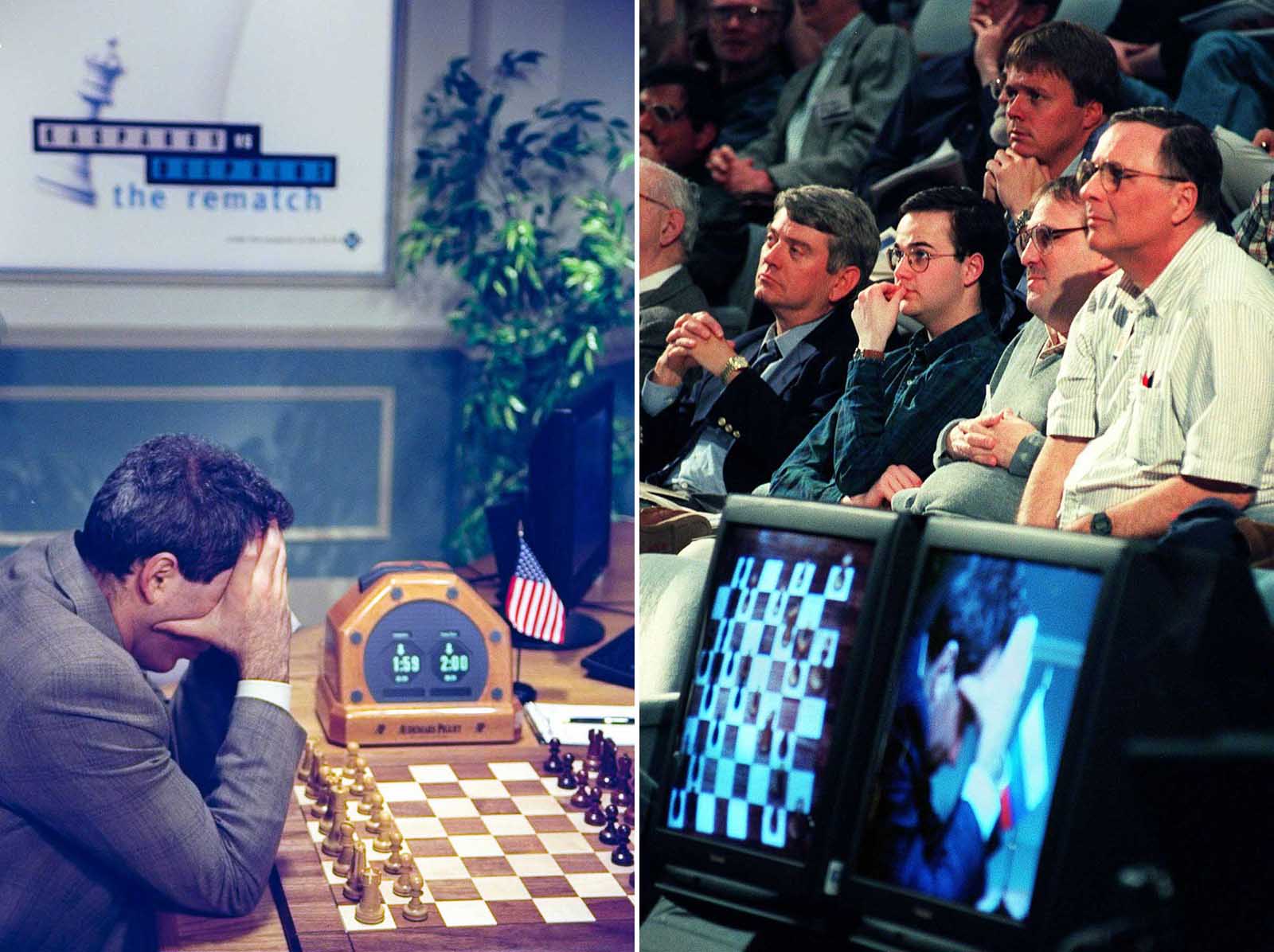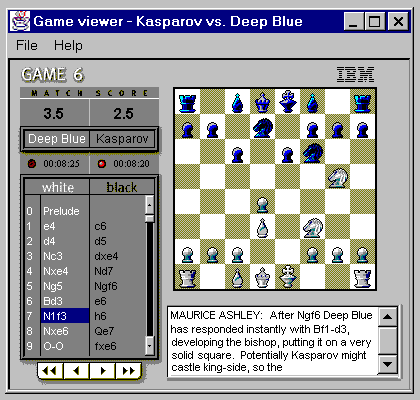

This is shortly how it works:įirst, a convolutional neural network (CNN) is instantiated with randomly initialized weights, with a tensor of 19 X 19 X 17 units as the input. Now about the algorithms and the software. This, in conjunction with quantization, which is basically a conversion of float numbers into integers, greatly accelerates predictions with the deep neural networks (NN). Tensor Processing Unit (TPU) uses a very different architecture from CPUs and GPUs, featuring Matrix Multiplication Unit with 65’536 arithmetic units, which can use and share the same data. 2017 was marked by another achievement in the development of artificial intelligence solutions: Google has significantly improved its specialized chip for matrix multiplications, which are essential for deep learning use cases. So, how does this now work ? AlphaGo Zeroįirst, about the hardware.
#DEEP BLUE CHESS IBM SOFTWARE#
First, AlphaGo (by Google and DeepMind) winning against Lee Sedol, the human champion in game go (chinese : 棋, qí), then AlphaGo Zero that can self-learn to play the game without any human assistance, and which has in only 36 hours outperformed and beaten 100-0 even the original AlphaGo champion software (trained during several months), and in the end AlphaZero that has disrupted the whole AI chess industry by beating the best software in a trivially short time. Just the hardware has been comoditized so now even a normal CPU can deliver sufficient computation performance.įast-forward to 20.

In addition to this, an opening book with about 4’000 positions were used, and an extended book of 700’000 games was consulted by the evaluation algorithm to assign bonuses to those moves already frequently played by the grandmasters. The features were weighted in a dynamic way, since most of the features’ importance depends on the stage of the game or overall number of pieces on the board. The evaluation function was hand-crafted by a grandmaster and took into account 8’000 different features, like rook trap, bishop pair, wasted pawns, opponent block, mobility, pawn structure, etc. IBM also implemented non-uniform software search algorithm capable of exploring some branches more deeply than the others. These units combined were able to evaluate 100-200 million of moves per second. IBM developed a specialized machine with 30 nodes, each node with 16 specialized chess processing units, capable to run hardware search. Garry Kasparov had for example extraordinary sophisticated evaluation capabilities, better than any other player. Evaluation functions are very complex, and this is were humans typically excel. Once this depth is reached, an evaluation function must be defined to assess the strength of achieved positions and to grade the selected moves.

This helped to reach deeper levels (up to 18 levels from the current position). Alpha-Beta pruning was developed to discard those subtrees that don’t contribute to the evaluation of the best moves for the Minimax algorithm. Due to the wide search, even nowadays this algorithm would go to the depth of maximum 10 levels within the allotted time for the move decision. Chess has up to 35 different moves, and can go to 50 moves deep, which makes it computationally impossible for any computer to identify all possibilities until the end of the game (35^50 is higher than the number of atoms in the universe). The best practice was the use of opening books for the first dozen moves, and then use of Minimax algorithm for the search.

AI-based solutions for game-playing haven’t changed a lot during this period. But it was only 40 years later, in 1997 that computer-based solution reached such a level to surpass the best human performance. The history of chess-playing AI solution goes back to 1957 when IBM research scientist Alex Bernstein wrote the first complete chess-playing program and ran it on IBM 704. How did this evolution happen and what are the key success factors of these remarkable events in the history of AI ? Deep Blueįirst, a little bit of history and background theory. Last year, Google repeated the same achievement with its Go-winning solutions AlphaGo, AlphaGo Zero and most recently AlphaZero. Twenty years ago, IBM impressed the world with its specialized chess-playing system that won the match against the best chess player of all times, Garry Kasparov.


 0 kommentar(er)
0 kommentar(er)
